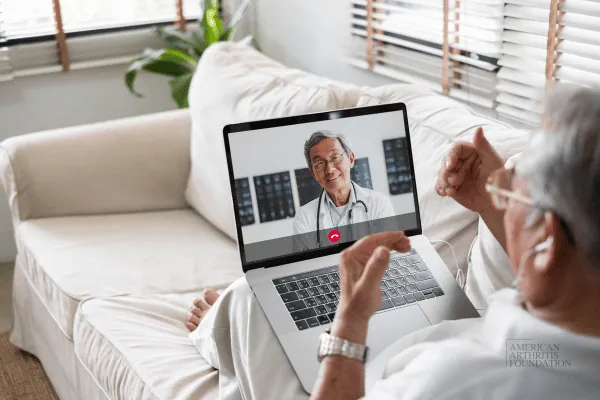Support and Learning Resources for Young Arthritis Patients
Close to 300,000 young individuals in the U.S. are affected by juvenile idiopathic arthritis (JIA) and related pediatric rheumatic conditions. These autoimmune disorders can impact joints, skin, eyes, and even internal organs. While receiving such a diagnosis might feel overwhelming, it's comforting to know that there are effective treatments to help manage the condition.
Juvenile arthritis encompasses a range of rheumatic conditions that affect children 16 years and younger. It's important to note that these aren't simply adult diseases appearing in kids; they have unique characteristics and require different treatment approaches. Among these conditions, juvenile idiopathic arthritis (formerly known as juvenile rheumatoid arthritis) is the most prevalent. Other examples include juvenile psoriatic arthritis, pediatric lupus, and several more.

Can Telehealth and Training Enhance Treat-to-Target Strategies for Rheumatoid Arthritis?
Managing rheumatoid arthritis (RA) often requires a careful balance of medication, monitoring, and treatment adjustments. A proven strategy, known as "treat-to-target," focuses on setting specific goals—like reducing disease activity—and adjusting treatments based on how well those goals are met. However, despite the effectiveness of this approach, it’s often underutilized in routine care. So, what’s standing in the way of its full implementation, and how can we make it work better for patients? New research points to telehealth and enhanced training as two promising solutions to improve the management of RA.
Why Treat-to-Target Is Important (But Often Missed)
Treat-to-target is a patient-centered strategy that involves setting clear treatment goals with your healthcare provider (HCP) and regularly checking disease activity. If those goals aren’t being met, your treatment plan is adjusted to better manage symptoms. While this sounds like a recipe for success, research shows that less than half of RA patients receive the full benefits of this approach.
Dr. Laure Gossec, a professor of rheumatology at Sorbonne University, and her team found that treat-to-target strategies are often not fully followed. Many patients with high disease activity aren't receiving changes in their treatment plan when necessary, leading to ongoing pain, stiffness, and joint damage. The barriers? A combination of factors, including insufficient disease monitoring, lack of shared decision-making, and poor communication between HCPs and patients.
The Potential of Telehealth and Digital Tools
In an effort to identify ways to improve treat-to-target strategies, Dr. Gossec and her colleagues conducted an in-depth review of over 140 studies. They looked at what interventions might help overcome these barriers and ultimately improve outcomes for RA patients. The review highlighted that using telehealth services and digital tools could make a big difference in how well this approach is implemented.
Telehealth has the potential to improve communication and provide more frequent check-ins between patients and their healthcare providers. Regular video calls, phone appointments, and digital platforms can help track disease activity more closely and make it easier for patients to report any changes in their symptoms. This allows HCPs to make timely treatment adjustments, ensuring that patients stay on track with their goals.
One of the most promising tools identified in the review is electronic disease assessment. These tools can provide patients and their healthcare providers with real-time data on disease progression, enabling quicker adjustments in treatment when needed. For patients living in rural areas or those who have difficulty making regular in-person appointments, telehealth and electronic assessments offer a more accessible and convenient way to manage RA.
Training: A Key Component for Better Care
In addition to telehealth, the review stressed the importance of proper training for healthcare providers. Structured training programs that guide doctors and other HCPs in making informed decisions about when and how to adjust treatments can significantly enhance the effectiveness of treat-to-target strategies. These programs also emphasize the importance of educating patients about their role in managing their condition—empowering them to be active participants in their care.
The review suggests that by combining telehealth with targeted HCP training, RA management could see a significant boost. For instance, training healthcare providers to use electronic tools effectively, guiding patients in self-directed joint assessments, and offering feedback during telehealth visits could all contribute to better care.
What’s Next?
The study concludes that integrating telehealth and personalized training into treat-to-target strategies can help overcome many of the current barriers. However, these interventions need to be tailored to the individual needs of patients and HCPs to be truly effective. Personalized care, after all, is the foundation of the treat-to-target approach.
At the American Arthritis Foundation, we believe in promoting the latest research that can improve the lives of people living with rheumatoid arthritis. This study underscores the potential of using telehealth and training to make treat-to-target more practical, accessible, and effective for everyone.
Have a question?
We're Here to Help
By providing my phone number, I agree to receive text messages from the business.


